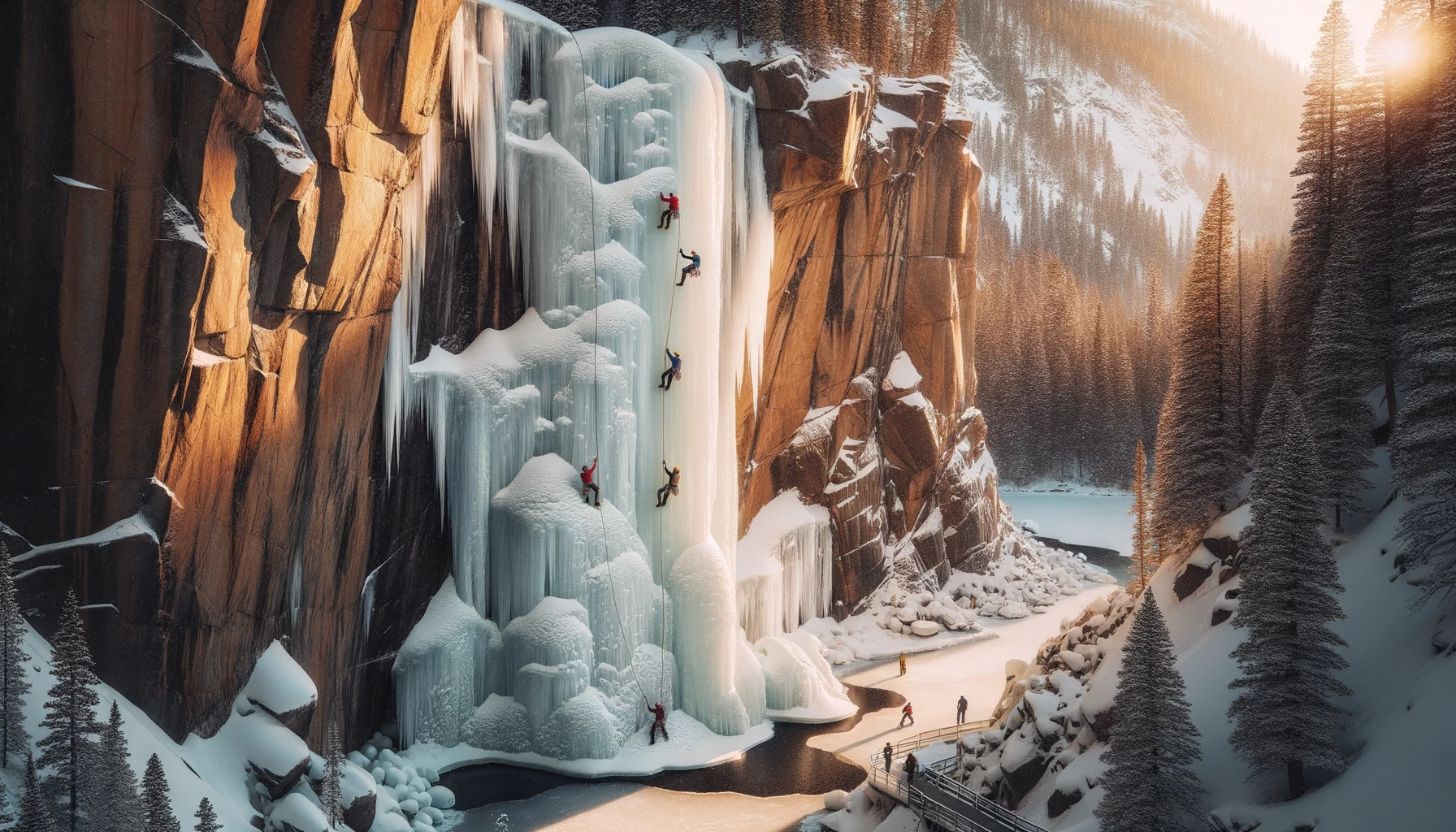Are you new to hiking and looking for beginner-friendly hikes? Choosing the right hiking trail is vital for a successful and enjoyable experience. Luckily, there are plenty of beginner-friendly hikes to choose from in the United States, whether you prefer a leisurely stroll or a challenging climb. In this guide, we’ll cover everything you need to know to get started on your hiking journey.
From the physical and mental health benefits of hiking to choosing the right trail and essential gear, we’ve got you covered. We’ll also recommend some of the best beginner hiking destinations and provide tips for documenting your adventures and joining hiking communities. Let’s dive in and uncover the best hikes for beginners!
Key Takeaways
- Choosing the right hiking trail is crucial for beginners
- There are plenty of beginner-friendly hikes to choose from in the United States
- Hiking provides physical and mental health benefits
- Essential gear and safety precautions are necessary for a successful hiking experience
- Joining hiking communities and documenting your adventures can enhance your hiking journey
Why Start Hiking?
If you’re a beginner to hiking, you may wonder why so many people are drawn to this popular outdoor activity. There are many reasons why hiking is beneficial for both your physical and mental health, making it an excellent choice for anyone seeking a new adventure.
One of the biggest benefits of hiking is its accessibility. Unlike other outdoor activities that require expensive gear or a specific level of fitness, hiking can be enjoyed by virtually anyone, regardless of their age or experience level. With easy access to beginner-friendly trails, it’s a great way to get started with outdoor activities.
Disclosure: When you buy through links on our site, we may earn an affiliate commission.
In addition to being a low-cost and low-impact activity, hiking offers a variety of physical benefits. Regular hiking can improve your cardiovascular health, strengthen your muscles, and help you lose weight. It can also reduce your risk of chronic diseases such as high blood pressure, diabetes, and arthritis. Hiking is a great way to get some exercise while enjoying the great outdoors.
But the benefits of hiking go beyond just physical health. Spending time in nature has been shown to improve mental health, reduce stress and anxiety, and boost overall well-being. Hiking allows you to disconnect from technology and connect with nature, giving you a sense of calm and relaxation.
As a beginner, it’s important to start slowly and build up your endurance. Here are some beginner hiking tips:
- Start with shorter hikes and gradually increase the distance.
- Find a hiking buddy or group to motivate you and share the experience.
- Invest in comfortable and supportive footwear.
- Dress in layers and bring plenty of water and snacks.
- Research the trail beforehand and choose one that matches your skill level.
By following these tips and embracing the many benefits of hiking, you’ll be well on your way to becoming a seasoned hiker in no time.

Choosing the Right Trail
Choosing the right hiking trail is crucial for beginners to have a safe and enjoyable experience. Easy hiking trails or beginner-friendly hiking trails are excellent for your first hikes. When selecting a trail, consider the following factors:
| Factor | Description |
|---|---|
| Trail Difficulty | The level of difficulty of a trail is determined by the terrain, distance, and elevation change. For beginners, it is recommended to start with easy to moderate level trails. |
| Distance | The length of the trail is another important factor to consider. Shorter trails are better suited for beginners, and you can gradually increase the distance as you build up your stamina. |
| Elevation Gain | Elevation gain is the vertical distance you climb during a hike. Trails with a gradual incline are easier to tackle compared to steep inclines, which can be challenging for beginners. |
| Terrain | The type of terrain, such as rocky, muddy, or sandy, can affect the difficulty of a trail. Flat and well-maintained trails are good for beginners. |
Avoid trails with steep climbs, narrow ledges, or dangerous drop-offs. Research and plan ahead before heading out on a hike, and check the trail difficulty, length, and terrain. You can find easy hiking trails or beginner-friendly hiking trails in national parks, state parks, and hiking guides.

It’s important to choose a trail that aligns with your abilities and fitness level. Don’t be afraid to ask questions or seek advice from park rangers or experienced hikers. Remember that safety comes first, and enjoyable hiking experiences come after.
Exploring Hiking Destinations
Now that you know some beginner hiking tips and how to choose the right hiking trail, it’s time to explore the best hiking destinations for beginners in the United States. From breathtaking national parks to state parks and other scenic areas, there are plenty of beginner-friendly hiking trails to suit your preferences.

One of the most popular beginner hiking destinations is Yosemite National Park in California. With its stunning waterfalls, valleys, and granite formations, Yosemite offers a variety of easy hikes that showcase the beauty of the park, such as the Sentinel Dome Trail and Mirror Lake Trail.
Another great beginner hiking destination is the Great Smoky Mountains National Park in Tennessee and North Carolina. The park offers more than 800 miles of trails, with many of them being beginner-friendly. The Cades Cove Loop Trail and Laurel Falls Trail are some of the most popular hikes in the park.
If you’re looking for state parks, check out the Red Rock Canyon State Park in California. The park’s hiking trails offer unique geological formations with stunning desert landscapes. The Hagen Canyon Nature Trail is a leisurely 1.5-mile hike that provides amazing views of the park.
Lastly, if you’re in the northeast, don’t miss out on the Acadia National Park in Maine. Known for its rugged coastline and scenic views, the park offers some of the best beginner-friendly hikes in the country. The Ocean Path Trail and Jordan Pond Path are just a few of the popular hikes in the park.
These are just a few of the many beginner hiking destinations across the United States. Do your research, plan ahead, and choose the destination that best suits your interests and hiking abilities.
Essential Gear and Equipment
Before you hit the trails, it’s essential to have the right gear and equipment to ensure a safe and comfortable hiking experience. Here are some beginner hiking tips for what to bring:
| Item | Description |
|---|---|
| Proper footwear | Invest in a pair of sturdy hiking boots or shoes with good traction and ankle support. Avoid using sneakers or sandals, as they do not provide adequate protection for your feet. |
| Clothing layers | Wear comfortable, moisture-wicking clothing in layers to regulate body temperature. Avoid cotton clothing, as it can retain moisture and become uncomfortable. Bring a rain jacket or windbreaker in case of inclement weather. |
| Backpack | Carry a backpack with enough capacity to hold your essentials, such as water, snacks, and a first aid kit. Look for backpacks with padded straps and back support for comfort. |
| Navigation tools | Bring a map and compass, and make sure you know how to use them. You can also use a GPS device or a smartphone app with offline maps. |
| First aid kit | Put together a basic first aid kit with items such as adhesive bandages, gauze, antiseptic wipes, and pain relievers. |
| Water bottles | Stay hydrated by carrying enough water for your hike. A general rule of thumb is to drink at least 2-3 liters of water per day of hiking. |
Remember to pack light and only bring what you need. Overpacking can lead to unnecessary discomfort and fatigue on the trails. Additionally, it’s a good idea to test out your gear and equipment before your hike to ensure everything fits and works properly.
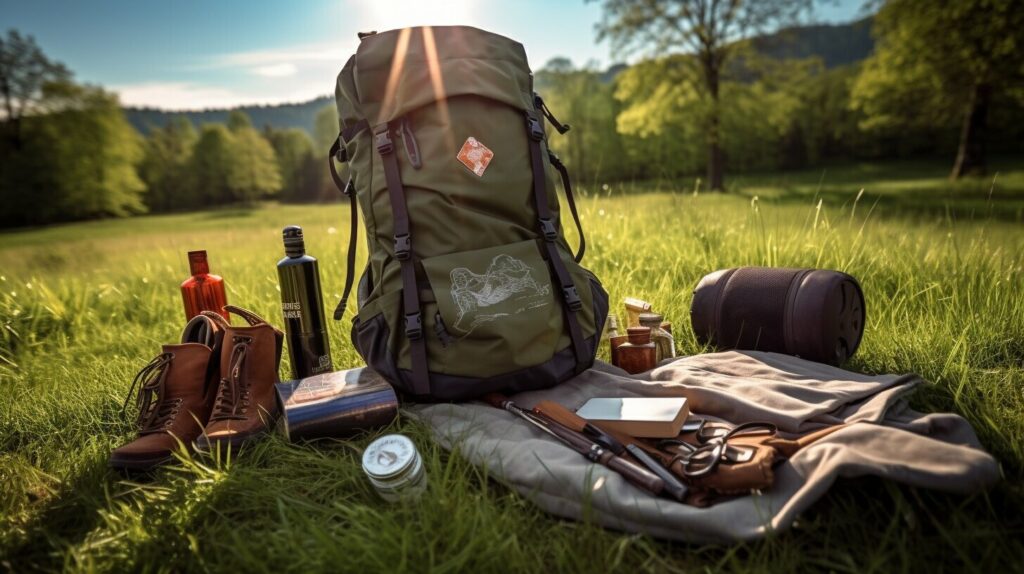
Safety Precautions for Beginners
Before embarking on your hiking journey, there are important safety precautions to keep in mind. By taking these precautions, you can ensure a safe and enjoyable experience on the trails.
Inform Others of Your Plans
Make sure that at least one other person knows your hiking plans. This includes your expected route, estimated time of return, and any backup plans in case of emergency. You can also leave a detailed note in your car or with a park ranger.
Check Weather Conditions
Before heading out, check the weather forecast and be prepared for any changes in weather conditions. Make sure to dress appropriately for the forecasted weather and consider bringing rain gear or extra layers if necessary.
Carry a Map and Compass
Carry a detailed map and compass with you. Familiarize yourself with the trail ahead of time and make sure to follow the trail markers. Pay attention to your surroundings and landmarks, and be prepared to use your map and compass if needed.
Stay Hydrated
Bring enough water and stay hydrated throughout the hike. Drink water regularly and carry a water purification system if necessary. Avoid drinking untreated water from natural sources.
Be Aware of Wildlife
Be aware of your surroundings and keep an eye out for wildlife. Keep a safe distance from animals, and make noise to avoid surprising them. Do not approach or attempt to feed any wildlife.
Know Your Limits
Know your physical abilities and stick to trails that match your skill level. Do not take unnecessary risks or attempt to hike beyond your limits. It is important to pace yourself and take breaks as needed.
Remember:
“Safety should always be your top priority when hiking.”
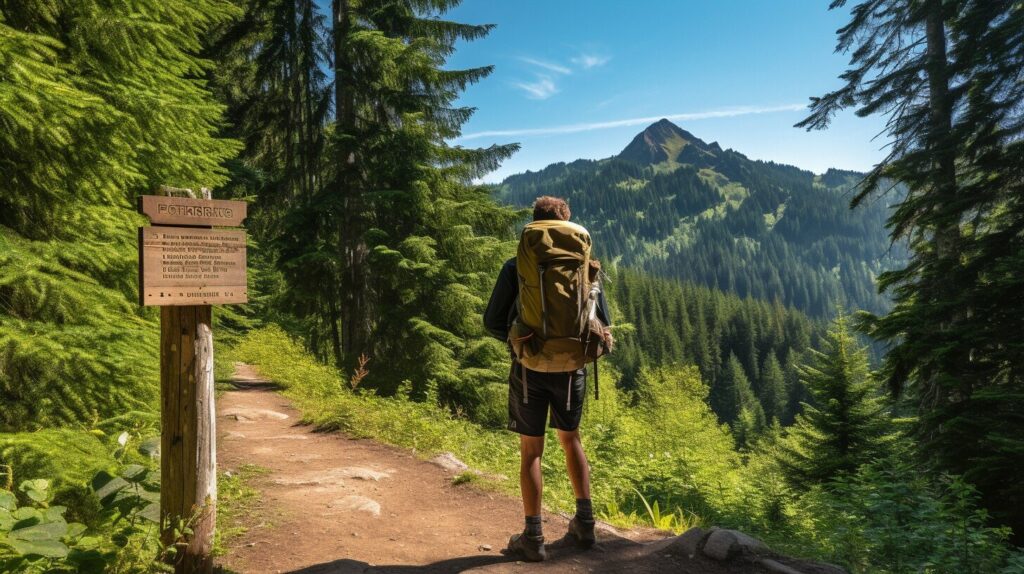
Stretching and Warm-up Exercises
Before hitting the trails, it’s important to prepare your body for the physical activity ahead. Warming up your muscles can help prevent injuries and ensure a more enjoyable hiking experience. Here are some stretching and warm-up exercises to try:
- Leg Swings: Stand facing a sturdy object, such as a tree or wall, and hold onto it for balance. Swing one leg forward and backward, then side to side, for 15-20 reps. Repeat on the other leg.
- Arm Circles: Stand tall with your arms extended out to the sides. Slowly rotate your arms forward in small circles, gradually increasing the size of the circles. After 10-15 reps, switch to rotating your arms backward.
- Lunges: Step forward with one foot and lower your body until your front knee is bent at a 90-degree angle. Keep your back straight and your core engaged. Push back up to the starting position and repeat on the other leg for 10-12 reps.
Remember to take your time and listen to your body during the warm-up. If any exercise causes pain or discomfort, stop immediately. By properly preparing your body for the hike ahead, you’ll be ready to take on any trail with confidence.

Tips for an Enjoyable Hiking Experience
As a beginner, hiking can be an incredibly rewarding experience, but it’s important to approach it with the right mindset and preparation. Here are some beginner hiking tips to ensure you have an enjoyable and memorable time.
Start with Shorter Hikes
When you’re just starting out, it’s best to begin with shorter hikes to build up your stamina and endurance. This will help you avoid exhaustion and injury, and allow you to fully enjoy the experience.
Pace Yourself
Remember that hiking is not a race – it’s about the journey, not the destination. Take your time and pace yourself, especially if you’re hiking on a trail with elevation gain. Listen to your body and take breaks as needed.
Take Breaks
It’s important to take regular breaks during your hike to rest, rehydrate, and refuel. Use these opportunities to enjoy the scenery and take in the beauty of nature around you.
Pack Snacks
Bring snacks that are easy to carry and provide sustained energy, such as nuts, fruit, and energy bars. Packing a picnic lunch can also be a memorable way to enjoy your time on the trail.
Embrace the Journey
Hiking is not just about reaching the summit or completing a trail – it’s about the experience of being in nature and connecting with your surroundings. Take the time to appreciate the sights, sounds, and smells around you.
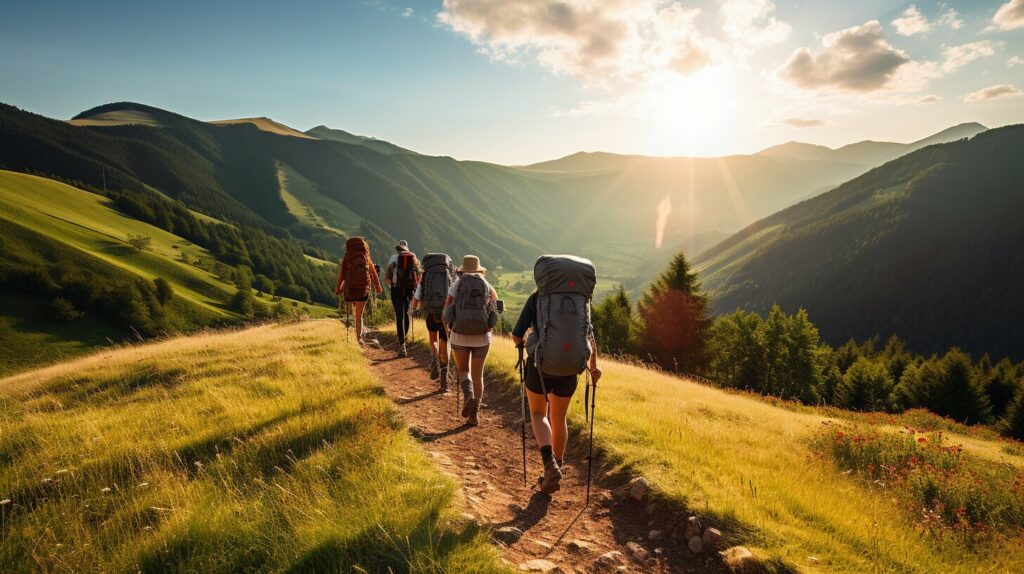
Documenting Your Adventures
One of the most memorable parts of hiking is the experience itself. Documenting your adventures is a great way to remember the sights, sounds, and feelings you encounter on the trail.
A hiking journal is an excellent way to keep track of your thoughts and experiences. Use it to jot down notes about the trail, the weather, and the people you meet along the way. You can also record personal reflections or observations about nature.
Taking pictures is another way to capture the magic of hiking. Make sure to bring along a camera or use your smartphone to snap photos of the scenery, wildlife, and fellow hikers.

Sharing your hiking experiences on social media can be a way to inspire others and encourage them to explore nature too. Use hashtags to connect with other hikers and share your photos and stories.
Documenting your adventures not only helps you remember your experiences, but it can also be a way to inspire others to start exploring the great outdoors.
Joining Hiking Groups and Communities
If you’re a beginner hiker looking to connect with other like-minded individuals and learn from experienced hikers, joining a hiking group or community is a great option. Not only will you have the chance to explore new trails together, but you’ll also have access to a wealth of knowledge and resources.
Many hiking groups offer a variety of activities and events, including group hikes, trail maintenance projects, and educational workshops. They also provide a supportive community that can help motivate you to continue your hiking journey.
To find a local hiking group or community, do some research online or ask for recommendations from friends or family members who enjoy hiking. You can also check with your local park or outdoor recreation center for information on group hikes or clubs.
Remember to always prioritize safety when hiking with a group. Be sure to inform others of your hiking plans, stick to the group’s pace, and follow any guidelines or rules set by the group leader or organizer.
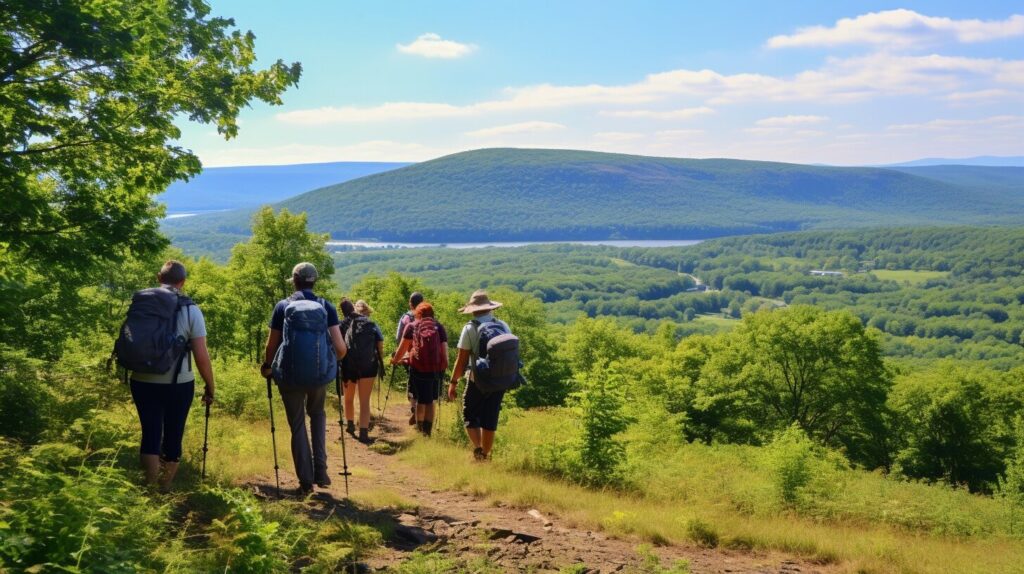
Recommended Beginner-Friendly Hikes
Looking for the best beginner hikes in the United States? Here are some of our top recommendations:
1. Angels Landing Trail, Zion National Park, Utah
If you’re looking for a thrilling hike with spectacular views, the Angels Landing Trail is a must-visit. This 2.5-mile trail is steep and narrow in some areas, but the breathtaking views from the top make it all worth it. Just be sure to hold onto the chains and take your time.
2. Hidden Lake Trail, Glacier National Park, Montana
This 3-mile hike is perfect for beginners who want to experience the beauty of Glacier National Park. The trail offers stunning views of Hidden Lake and the surrounding mountains. You may even spot some wildlife along the way.
3. Old Rag Mountain Trail, Shenandoah National Park, Virginia
The Old Rag Mountain Trail is a challenging but rewarding hike for beginners. The 8-mile trail features rock scrambles, stunning views, and a peaceful summit where you can relax and take in the scenery.
4. Rim Trail, Grand Canyon National Park, Arizona
The Rim Trail is a flat, easy hike that offers incredible views of the Grand Canyon. You can choose to hike the entire 13 miles or just a portion of it. Just be sure to bring plenty of water and sunscreen.
5. Emerald Lake Trail, Rocky Mountain National Park, Colorado
This 3.5-mile hike is a great introduction to the beauty of Rocky Mountain National Park. The trail takes you past three stunning alpine lakes and offers views of towering peaks and pristine wilderness.

Conclusion
By now, you should have a better understanding of why hiking is beneficial, how to choose the best trails, what gear you need, and how to stay safe while hiking.
Remember, hiking is a wonderful way to explore nature, challenge yourself physically and mentally, and create lasting memories. As a beginner, take it slow, listen to your body, and enjoy the journey.
We hope this guide has inspired you to start your hiking journey and explore the beauty of the United States. Don’t forget to document your adventures and share them with others. And if you’re looking for more support and community, consider joining a hiking group or community.
Happy hiking!
FAQ
Q: What are the benefits of hiking for beginners?
A: Hiking offers numerous physical and mental health benefits. It allows beginners to stay active, improve cardiovascular fitness, build strength and endurance, reduce stress, and connect with nature.
Q: How do I choose the right hiking trail as a beginner?
A: When choosing a hiking trail, consider factors such as difficulty level, distance, elevation gain, and terrain. Research and plan ahead to find beginner-friendly trails that suit your fitness level and preferences.
Q: What gear and equipment do I need for hiking as a beginner?
A: Essential gear and equipment for hiking as a beginner include proper footwear, layered clothing, a backpack, navigation tools, a first aid kit, and a water bottle. Look for affordable and quality hiking gear from reputable outdoor retailers.
Q: What safety precautions should beginners take when hiking?
A: Beginners should inform others of their hiking plans, check weather conditions, carry a map and compass, stay hydrated, be aware of wildlife, and hike within their abilities. Prioritize safety to ensure a positive and enjoyable hiking experience.
Q: Are there any recommended warm-up exercises for beginners before hiking?
A: Yes, warming up before hiking is important. Simple exercises like leg swings, arm circles, lunges, and stretching can help warm up muscles and prevent injuries. Incorporate these exercises into your pre-hike routine.
Q: What additional tips can make a hiking experience more enjoyable for beginners?
A: Start with shorter hikes, pace yourself, take breaks, pack snacks, and embrace the journey. Pay attention to the sights, sounds, and smells of nature to fully immerse yourself in the hiking experience.
Q: How can beginners document their hiking adventures?
A: Beginners can keep a hiking journal, take photos, and share their experiences on social media. These methods allow for capturing memorable moments and creating lasting memories of their hiking adventures.
Q: What are the advantages of joining hiking groups or communities as a beginner?
A: Joining hiking groups or communities provides opportunities to learn from experienced hikers, meet like-minded individuals, and explore new trails together. It fosters a sense of community and enhances the overall hiking experience for beginners.
Q: Can you recommend any beginner-friendly hikes in the United States?
A: Yes, we have curated a list of recommended beginner-friendly hikes in the United States. These hikes offer a variety of scenic views and unique features suitable for beginners. Check out our list for more information.




